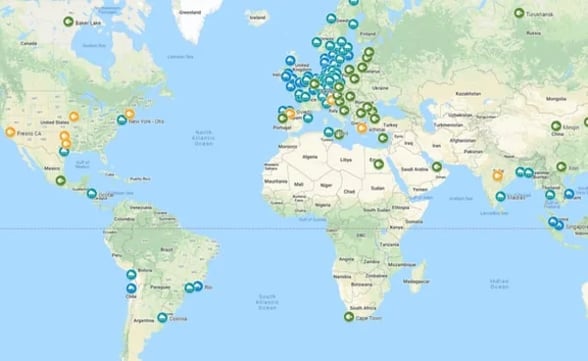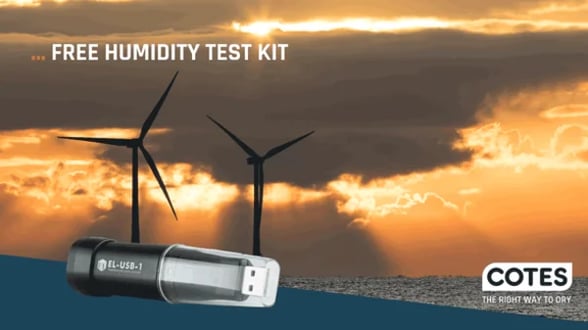Building a wind farm onshore or offshore is a complicated process. Main components like towers, nacelles, hubs, and blades can be in transit for months or even years, before being put together as a turbine on site. The final assembled turbine may also be left unpowered for a long period of time until cables and the grid are installed. The question is:
What do you do, as an asset owner, to avoid taking over a set of damp turbines, that will most likely cause you problems in the years ahead?
The answer is relatively simple: Include clear clauses in your tender material (ie. owner's requirements) and contracts like the TSA (Turbine Supply Agreement) stating that relative humidity must not exceed 60% RH during transport, construction, and operation. And document this with data loggers. This recommendation also applies if you work as owner’s engineers, lender’s technical advisors, underwriters at insurance companies, or legal advisors.
Why demand RH below 60%?
Because relative humidity above 60% RH is where you will start to see electrical failures, mould growth and corrosion forming. With a simple clause in the contract, you will leave it to your suppliers to solve the issue. How they do it, is not necessarily your concern. [Of course, at Cotes, we believe, that an adsorption dehumidifier is the best way to go - dry bags have to be replaced in due time to avoid flooding, and condensation dehumidifiers require drains and do not work that well in low temperatures].
That is also why a working group under the Danish Wind Industry Association in a standard recommends the use of dehumidifiers inside towers to prevent corrosion, mould etc.
Learn more about how dehumidification works in our FAQ.
To put the question another way: Would you want to live in a house where the main components have been left out in the rain for several months before assembly?
In most places of the world, relative humidity is above 60% RH for several thousand hours out of the year. In many popular locations for wind farms, these high humidity levels are seen for 80% of the year. A year has 24 hours x 365 days = 8760 hours. Several places in Denmark, Scotland, and Brazil experience more than 8000 hours every year with humidity levels above 60%. Even in the US Midwest, you see 5000 hours every year with high humidity levels.
For more details check out the Cotes global humidity index
Many projects in the US have been developed under the Production Tax Credit (PTC). In order to get the highest credit, a project must either be proven to have started preliminary construction or to have purchased a certain amount of turbine components in the first year of a credit cycle. For this reason, we have seen hundreds of projects with main components like towers or blades sitting on site for months or even years before construction is finished.
As an asset owner, you want to protect your investment from start to finish - choosing to include contractual requirements for RH to be less than 60% during construction, transport, and operation is one important and effective way to do this.


